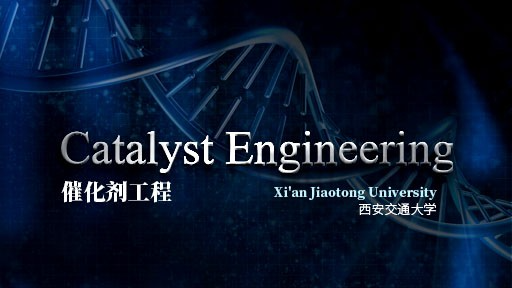
当前课程知识点:Five Disciplines of Management Quality and Ability —— Follow Me to Learn Management > The Third Discipline: Efficient Organization, Excellent Culture > 3.2 How to Establish an Effective Organizational Structure (Ⅰ) > 3.2 How to Establish an Effective Organizational Structure (Ⅰ)
返回《Five Disciplines of Management Quality and Ability —— Follow Me to Learn Management》慕课在线视频课程列表
返回《Five Disciplines of Management Quality and Ability —— Follow Me to Learn Management》慕课在线视频列表
欢迎大家来到今天的管理课堂
今天让我们来聊一聊
如何建立有效的组织结构
这部分内容我将分为两次课
来为大家讲解
在进入今天课堂之前
让我们先来 想一想
我有一位MBA学生
去年毕业后开始自主创业
创办了一家
15人左右的小公司
由于公司规模不大
大事小事都是他自己亲自过问
经过一年的发展
业务有了较快地增长
目前员工数已达到50多人了
出于管理成本的考虑
他并没有增设
相关的职能部门
最近他跟我提到了
公司管理中的一些难题
公司里无论出了什么问题
员工首先想到的就是
向他来请示
这种状况带来了三个问题
1 老板个人工作量迅速增加
效率也不高
2 员工之间缺少联系 各自为阵
员工凝聚力开始下降
3 员工遇到一些日常性的问题
不知道相应的操作流程和责任人
从组织结构的角度来看
应该如何去解决这些问题呢
请带着你的思考
一起进入今天的管理课堂
美国著名管理学者西蒙曾经说过
有效开发社会资源的
第一个条件就是
建立有效的组织结构
长期以来
组织结构都是管理学者
所关注的重点问题
实际上
组织结构就是组织各个组成部分
以及它们之间关系的一种模式
简而言之
组织结构就是框架
组织结构并非一成不变
随着组织内外部环境的不断变化
以及组织自身不断的成长
组织结构的形式
也会经历一个不断演化的过程
组织结构通常分为6种类型
直线型 直线职能型 矩阵型
事业部型 网络型和控股型
这次课我们重点讲解前三种
直线型组织结构是一种
最早和最简单的组织形式
产生于工业发展初期的手工作坊
当时劳动生产过程十分简单
手工作坊规模也很小
这种组织形式没有设立职能机构
作坊中的生产 技术 销售 财务等各项事务
都需要老板亲自去管理
今天 一些公司刚刚创业起步的时候
大多是采用这样的组织结构形式来运营
随着手工作坊的进一步发展
员工的数目越来越多
组织的规模也越来越大
管理的事务越来越复杂
各项事务都由老板
个人亲自去管理
显然不现实
于是更多的企业或组织就选择了
直线职能式组织结构
这种组织结构是在直线型结构的基础上
增加了一些职能部门
如财务部门 人力资源部门等等
这样既能分担
直线领导的一些工作量
又能显示出专业化管理的优势
直线职能型组织结构
也只适用于
中小规模的企业或组织
当组织持续成长
发展到一定规模的时候
很多企业或组织就会推动组织结构
向事业部型的组织结构转化
事业部型结构
是一种在总公司之下
按照产品或者地区
来设立事业部
这种组织结构实施的是
政策制定集权化
业务经营分权化
事业部组织结构具有三个层次
1 战略决策中心
总公司只负责制定大的战略
只掌握一些大的人事权
和大的财权
不再负责日常的生产经营事务
2 利润中心
事业部不是独立的法人
但是每个事业部
都是一个独立的利润中心
负有向总公司完成利润的责任
在总公司的领导之下
实行统一的政策
分散经营 独立核算 自负盈亏
3 成本中心
各个事业部可以根据业务活动的需要
设置一些职能机构
下面我们来看一看
腾讯公司是如何去实现
它的组织结构调整的
41047
腾讯公司的组织机构
从之前的业务系统制
升级成了事业群制
现有业务重新划分成
企业发展事业群等5个事业群
整合原有的研发和运营平台
新的技术工程事业群
并成立腾讯电商控股公司
马化腾在一封内部邮件中
指出了此次整合要实现的几大目标是
强化社交网络
拥抱全球网络机遇
发力移动互联网
整合网络媒体平台
聚力培育搜索业务
推动电商扬帆远航
腾讯公司进行组织结构的调整
主要有两方面原因
从外部看 是顺应移动互联网
电子商务以及社交网络发展的必然需求
一方面 强化了移动互联网
电子商务和社交网络三大业务
另外一方面
搜索业务的双引擎组织架构设计
推进搜索的商业化
从内部来看
随着腾讯人员及组织的不断扩充
已有的组织机构出现了许多弊端
第一 腾讯之前
研发+业务系统+运营平台的组织架构
导致不同业务部门自立山头
开发近似的产品
出现资源浪费情况
第二 随着组织的庞杂
各业务部门间
沟通成本显著增加
效率显著下降
另外 KPI导向的管理机制
导致组织僵化
忽视了用户的体验及需求
因此腾讯公司的
组织架构需要调整
移动互联网业务由之前的
无线业务系统整合而来
并增加了之前
搜索研发平台的资源
可以看到腾讯公司
对移动互联网业务的重视
我们从腾讯公司
事业制改革中可以发现
当一个公司战略目标调整之后
就必须重新调整组织架构
战略是通过组织来实现的
要有效地实施一项新的战略
就需要一个新的组织结构
现在
让我们回到课程开始前的 想一想
从组织结构的角度来看
应该如何解决老板
遇到的这些难题呢
我的建议是
可以组建直线职能式组织结构
从三个方面进行优化
1 专门化
企业管理中更多的是采用
各司其职的做法
一些常规管理人员
如财务人员 行政人员
他的工作是相对固定的
这样 公司分工清晰
员工对自己所从事的工作
非常熟悉
有利于提高工作效率
2 部门化
根据公司的规模
设立销售 财务 人事等等部门
明确各部门负责人
每个部门各司其职
公司的事务都分解到
这些部门来完成
3 将 线 的组织转变成 面 的组织
面 的组织是指
各个员工不仅要与
总经理或者部门经理
形成直接的纵向连接
而且在员工之间
要形成横向连接
学以致用
在今天课程结束之前
我给大家留下一个思考题
请大家 用一用
事业部和子公司都是属于
一种分权化的组织结构形式
请大家思考一下
一些企业选择事业部这种组织形式
而不选择子公司这种形式
主要是出于什么考虑
而一些企业选择子公司这种组织形式
而不选择事业部这种组织形式
又是出于什么考虑
关于思考题的答案
我们会在课程的互动讨论区给出
好 今天我们就到这里
下次课见
-0.1 What is Management: The Secret of Management is to Borrow Resources
--0.1 What is Management: The Secret of Management is to Borrow Resources
--0.1 What is Management: The Secret of Management is to Borrow Resources
--0.1 What is Management: The Secret of Management is to Borrow Resources
-0.2 Natural Attribute and Social Attribute of Management
--0.2 Natural Attribute and Social Attribute of Management
--0.2 Natural Attribute and Social Attribute of Management
--0.2 Natural Attribute and Social Attribute of Management
-0.3 The Scientificity and Artistry of Management
--0.3 The Scientificity and Artistry of Management
--0.3 The Scientificity and Artistry of Management
--0.3 The Scientificity and Artistry of Management
-0.4 Management Functions, Skills and Roles
--0.4 Management Functions, Skills and Roles
--0.4 Management Functions, Skills and Roles
--0.4 Management Functions, Skills and Roles
-0.5 Case Study: Personal Excellence Doesn’t Mean Much
--0.5 Case Study: Personal Excellence Doesn’t Mean Much
--0.5 Case Study: Personal Excellence Doesn’t Mean Much
--0.5 Case Study: Personal Excellence Doesn’t Mean Much
-0.6 Centennial Management Context (Ⅰ)
--0.6 Centennial Management Context (Ⅰ)
--0.6 Centennial Management Context (Ⅰ)
--0.6 Centennial Management Context (Ⅰ)
-0.7 Centennial Management Context (Ⅱ)
--0.7 Centennial Management Context (Ⅱ)
--0.7 Centennial Management Context (Ⅱ)
--0.7 Centennial Management Context (Ⅱ)
-0.8 Case Study: Management Enlightenment of Journey to the West Team
--0.8 Case Study: Management Enlightenment of Journey to the West Team
--0.8 Case Study: Management Enlightenment of Journey to the West Team
--0.8 Case Study: Management Enlightenment of Journey to the West Team
-Course Introduction Unit Test
-1.1 Insight into the General Trend of the Environment (Ⅰ): PEST Method
--1.1 Insight into the General Trend of the Environment (Ⅰ): PEST Method
--1.1 Insight into the General Trend of the Environment (Ⅰ): PEST Method
--1.1 Insight into the General Trend of the Environment (Ⅰ): PEST Method
-1.2 Insight into the General trend of the Environment (Ⅱ): Porter’s Five Forces Model
--1.2 Insight into the General trend of the Environment (Ⅱ): Porter’s Five Forces Model
--1.2 Insight into the General trend of the Environment (Ⅱ): Porter’s Five Forces Model
--1.2 Insight into the General trend of the Environment (Ⅱ): Porter’s Five Forces Model
-1.3 Case Study: How McDonald’s Entered Chinese Market
--1.3 Case Study: How McDonald’s Entered Chinese Market
--1.3 Case Study: How McDonald’s Entered Chinese Market
--1.3 Case Study: How McDonald’s Entered Chinese Market
-1.4 Strategic Decision Analysis Tools: SWOT Analysis and BCG Matrix
--1.4 Strategic Decision Analysis Tools: SWOT Analysis and BCG Matrix
--1.4 Strategic Decision Analysis Tools: SWOT Analysis and BCG Matrix
--1.4 Strategic Decision Analysis Tools: SWOT Analysis and BCG Matrix
-1.5 Group Decision-making Tools and Methods: Delphi Method and Brainstorming Method
--1.5 Group Decision-making Tools and Methods: Delphi Method and Brainstorming Method
--1.5 Group Decision-making Tools and Methods: Delphi Method and Brainstorming Method
--1.5 Group Decision-making Tools and Methods: Delphi Method and Brainstorming Method
-The First Unit Test
-2.1 Attitude Determines Everything
--2.1 Attitude Determines Everything
--2.1 Attitude Determines Everything
--2.1 Attitude Determines Everything
-2.2 The Components and Formation of Attitude
--2.2 The Components and Formation of Attitude
--2.2 The Components and Formation of Attitude
--2.2 The Components and Formation of Attitude
-2.3 How to Change the Attitude of Employees
--2.3 How to Change the Attitude of Employees
--2.3 How to Change the Attitude of Employees
--2.3 How to Change the Attitude of Employees
-2.4 Responsibility and Efficient Execution
--2.4 Responsibility and Efficient Execution
--2.4 Responsibility and Efficient Execution
--2.4 Responsibility and Efficient Execution
-2.5 Ethics and Core Values
-The Second Unit Test
-3.1 Basic Issues in Organization
--3.1 Basic Issues in Organization
--3.1 Basic Issues in Organization
--3.1 Basic Issues in Organization
-3.2 How to Establish an Effective Organizational Structure (Ⅰ)
--3.2 How to Establish an Effective Organizational Structure (Ⅰ)
--3.2 How to Establish an Effective Organizational Structure (Ⅰ)
--3.2 How to Establish an Effective Organizational Structure (Ⅰ)
-3.3 How to Establish an Effective Organizational Structure (Ⅱ)
--3.3 How to Establish an Effective Organizational Structure (Ⅱ)
--3.3 How to Establish an Effective Organizational Structure (Ⅱ)
--3.3 How to Establish an Effective Organizational Structure (Ⅱ)
-3.4 Case Study: The Responsibility of the Sales Department
--3.4 Case Study: The Responsibility of the Sales Department
--3.4 Case Study: The Responsibility of the Sales Department
--3.4 Case Study: The Responsibility of the Sales Department
-3.5 Effective Communication Skills
--3.5 Effective Communication Skills
--3.5 Effective Communication Skills
--3.5 Effective Communication Skills
-3.6 Organizational Cultural Function and Content
--3.6 Organizational Cultural Function and Content
--3.6 Organizational Cultural Function and Content
--3.6 Organizational Cultural Function and Content
-3.7 Case Study: Resignation (Ⅰ)
--3.7 Case Study: Resignation (Ⅰ)
--3.7 Case Study: Resignation (Ⅰ)
--3.7 Case Study: Resignation (Ⅰ)
-3.8 Case Study: Resignation (Ⅱ)
--3.8 Case Study: Resignation (Ⅱ)
--3.8 Case Study: Resignation (Ⅱ)
--3.8 Case Study: Resignation (Ⅱ)
-The Third Discipline Unit Test
-4.1 How to Recruit Good Staff
--4.1 How to Recruit Good Staff
--4.1 How to Recruit Good Staff
--4.1 How to Recruit Good Staff
-4.2 Motivate Employees’ Work Potential
--4.2 Motivate Employees’ Work Potential
--4.2 Motivate Employees’ Work Potential
--4.2 Motivate Employees’ Work Potential
-4.3 Content-based Incentive Theory (Ⅰ): Hierarchical Theory and ERG theory
--4.3 Content-based Incentive Theory (Ⅰ): Hierarchical Theory and ERG theory
--4.3 Content-based Incentive Theory (Ⅰ): Hierarchical Theory and ERG theory
--4.3 Content-based Incentive Theory (Ⅰ): Hierarchical Theory and ERG theory
-4.4 Content-based Incentive Theory (Ⅱ): Motivator-Hygiene Theory
--4.4 Content-based Incentive Theory (Ⅱ): Motivator-Hygiene Theory
--4.4 Content-based Incentive Theory (Ⅱ): Motivator-Hygiene Theory
--4.4 Content-based Incentive Theory (Ⅱ): Motivator-Hygiene Theory
-4.5 Process-based Incentive theory: Expectation Theory and Fairness Theory
--4.5 Process-based Incentive theory: Expectation Theory and Fairness Theory
--4.5 Process-based Incentive theory: Expectation Theory and Fairness Theory
--4.5 Process-based Incentive theory: Expectation Theory and Fairness Theory
-4.6 Behavioral Transformation Incentive Theory: Reinforcement Theory
--4.6 Behavioral Transformation Incentive Theory: Reinforcement Theory
--4.6 Behavioral Transformation Incentive Theory: Reinforcement Theory
--4.6 Behavioral Transformation Incentive Theory: Reinforcement Theory
-The Fourth Unit Test
-5.1 The Essence and Tasks of Effective Leaders
--5.1 The Essence and Tasks of Effective Leaders
--5.1 The Essence and Tasks of Effective Leaders
--5.1 The Essence and Tasks of Effective Leaders
-5.2 Trait Theory of Leadership
--5.2 Trait Theory of Leadership
--5.2 Trait Theory of Leadership
--5.2 Trait Theory of Leadership
-5.3 Leadership Behavior Theory
--5.3 Leadership Behavior Theory
--5.3 Leadership Behavior Theory
--5.3 Leadership Behavior Theory
-5.4 Leadership Situation Theory
--5.4 Leadership Situation Theory
--5.4 Leadership Situation Theory
--5.4 Leadership Situation Theory
-5.5 Innovation and Entrepreneurship
--5.5 Innovation and Entrepreneurship
--5.5 Innovation and Entrepreneurship
--5.5 Innovation and Entrepreneurship
-5.6 Two New Trends of Innovation
--5.6 Two New Trends of Innovation
--5.6 Two New Trends of Innovation
--5.6 Two New Trends of Innovation
-The Fifth Unit Test
-Final Exam


